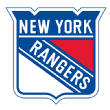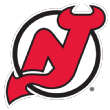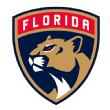The 2025 NHL offseason has already been a roller coaster with several key players being traded, 224 prospects finding new homes via the draft, and a slew of re-signings.
As the free agent deals continue to roll in, ESPN NHL reporters Ryan S. Clark, Kristen Shilton and Greg Wyshynski will be grading the big-name signings, including the player’s fit with his new team, terms of the deal and more.
We’ll continue to assess the most notable moves through the offseason, so check back for fresh grades as deals are consummated; the newest grades will be listed first. Contract terms are per year.
Draft recap: All 224 picks
Grades for all 32 teams
Winners and losers

July 1

The terms: 3 years, $3.5 million AAV
Grade: B+
Where does he fit?
Call it the Florida Effect.
Going to the Panthers revitalized Nate Schmidt. He had a strong regular season and was even better during Florida’s Stanley Cup run, producing three goals and 12 points in 23 games. Schmidt earned his minutes on the Panthers’ third pairing as an excellent rush defender, who made good decisions with the puck and turned in some impressive playmaking performances.
Basically, Schmidt can do it all (in the right spot). And he earned the pay bump Utah offered.
The Mammoth are getting Schmidt at his (recent) best, after all. He can plug in on their third pairing, carry a decent workload and contribute at 5-on-5 and on special teams. He will also be a veteran presence on a young team that’s still finding its way and crafting an identity. While Schmidt isn’t the fastest skater, he’s smart, confident and seasoned. A real trifecta.
Does it make sense?
Absolutely.
The Mammoth were a middle-of-the-road defensive team last season, averaging 3.01 goals against and lacking a real punch on their back end beyond Mikhail Sergachev and his 53-point campaign. Schmidt stands to help elevate the entire group. He’ll be an upgrade over Ian Cole and can provide a higher offensive upside than Juuso Valimaki. All good things for the Mammoth.
If Utah can shelter Schmidt in the right role, he should bring some Cup-winning pedigree and consistent output that improves the blue line.

The terms: 4 years, $4.5 million AAV
Grade: B
Where does he fit?
Lindgren appears to be part of a larger plan that’s concentrating on how the Kraken can improve upon the defensive inconsistencies that were a chronic issue throughout the 2024-25 season.
Natural Stat Trick’s metrics show they were top 10 in terms of most scoring chances allowed per 60, most shots allowed per 60 and the most high-danger scoring chances allowed per 60.
The Kraken were also 21st on the penalty kill with a 77.2% success rate.
Last season saw him finish with four goals and a career high 22 points in 72 games between the New York Rangers and the Colorado Avalanche. So, while there is a bit of an offensive element to his game, the intent for the Kraken or anyone who had interest in Lindgren was what he can do on the defensive end.
It starts with the fact that he adds to the Kraken’s top-six setup that already had Vince Dunn, Ryker Evans, Adam Larsson, Brandon Montour, and Jamie Oleksiak with the idea that Josh Mahura becomes their seventh defenseman.
Getting Lindgren now provides a bit more flexibility in that he could either be a top-four or No. 5 defenseman for the Kraken who could also be used to play a significant role on the penalty kill given he has logged more than 127 short-handed minutes in each of his six full NHL campaigns.
Does it make sense?
Lindgren gives the Kraken another dimension they didn’t previously have and along with two-way center Frederick Gaudreau further establishes what new Kraken GM Jason Botterill is trying to do to when it comes to the team having more defensive consistency.
Although there is a role for him with the Kraken, there is a discussion to be had with where he exactly fits in the defensive dynamic.
Dunn and Larson have largely operated as their top pairing considering they provide the balance of a puck-mover being paired with a physical, stay-at-home option that also has a left-handed shot playing alongside a right-handed shot.
Should that combination hold, then it presents the Kraken’s second pairing as the next potential option. Montour gives the second pairing another puck-mover who is a right-handed shot. It creates an opening for another stay-at-home defenseman with a left-handed shot.
But is that Lindgren or is that Oleksiak? And no matter who gets the nod, is it the most prudent decision to pay a No. 5 defensemen right at or slightly more than $4.5 million annually?
Especially when there are other financial considerations to make. They’ll need to get a deal done for Evans, a pending RFA, while figuring out what the next contracts could look like for RFAs such as Kaapo Kakko and Tye Kartye.
PuckPedia projects they’ll have $13.557 in remaining cap space with the reality that the Kraken will need to use that money to sign their RFA class with the idea that creating more space could prompt them to make a trade. — Clark

The terms: 7 years, $7 million AAV
Grade: B+
Where does he fit?
This was an early birthday present for Adam Fox.
The Rangers’ best defenseman saw a dip in production last season (61 points in 74 games) due to injuries and an off year for the team overall, but also because Fox couldn’t find the right fit on their top pairing. He didn’t generate enough offense next to long-time partner Ryan Lindgren, who was traded to Colorado. His partnership with K’Andre Miller was more successful, but the Rangers didn’t want to commit long term to him and traded the restricted free agent to Carolina on Tuesday.
Enter Vladislav Gavrikov, a true top-pairing shutdown defenseman. It gives them a lefty-righty combination with Fox. It gives Fox what he used to have with Lindgren, which is a stay-at-home defender that’ll allow him to take more chances offensively.
Gavrikov was really solid for the Los Angeles Kings last season, playing the most average minutes (23:05) of his six-year career and facing tough competition every night. His pairing with Mikey Anderson gave up just 1.61 goals per 60 minutes at 5-on-5. He’s not the most physical defenseman, but he’s an underrated skater and plays smartly in his own zone. Gavrikov was 12th on the Kings in penalty minutes per game (0:20) in 82 games.
Does it make sense?
He fills a vital need for the Rangers, both in helping Fox and adding veteran defensive depth on a rebuilding blueline. The 29-year-old is coming off a great season with the Kings and is very much in his prime. For all his defensive acumen, he also contributed 30 points last season.
Gavrikov has some history with two current Rangers, having played with Artemi Panarin in Columbus and Igor Shesterkin in the KHL.
The contract comes in at $1.5 million annually less than that of Ivan Provorov, who just re-signed with Columbus. The gap between the two is narrow as far as impact. It is front-loaded with $25.2 million in bonus money in the first five seasons, but the Rangers hopefully won’t have to do any buyout math here. He’s a solid addition. — Wyshynski

The terms: 7 years, $7.25 million AAV
Grade: B
Where does he fit?
The Canucks had a lot of problems last season — underperformers, injuries, a locker room feud that necessitated the trade of J.T. Miller — but one of their primary concerns was an offense that generated just 2.84 goals per game.
Boeser had 40 goals in 2023-24 and had 25 last season in 75 games. He’s not the fastest guy. He’s not going to dazzle you with highlight-reel dangles. There are players who are better in transition with the puck. He’s just going to convert his chances and help create them in the offensive zone, especially with offense coming from high-danger areas.
He played around the lineup for Vancouver last season, including with much maligned center Elias Pettersson. If Petey is going to get his game back on track, he needs a player like Boeser. If Filip Chytil is going to be an offensive force for Vancouver, he needs a player like Boeser.
Which is why it’s odd that the Canucks seemingly didn’t want Boeser before signing him on Tuesday.
Does it make sense?
The situation between the Canucks and Boeser was truly bizarre. There was a considerable gap between the two sides in their contract negotiation, to the point where the team attempted to trade Boeser at the deadline. Vancouver had a price in mind. No one came close to meeting it. “If I told you what I was offered for Boeser, you wouldn’t believe me,” said GM Patrick Allvin. As the season neared its end, Boeser was convinced he was playing his final games for the Canucks. “Honestly, it’s unlikely at this point,” he told Sportsnet. “It sucks, it’s unfortunate. I’m just trying to play good hockey, and then I’ll worry about everything after that.”
Many assumed the Wild would sign the Minnesota native, but after balking at the term, they opted for acquiring Vladimir Tarasenko. Teams like the Edmonton Oilers and Winnipeg Jets seemed ready to pounce on Boeser. But in the end, he made an unexpected return to the Canucks for 7 years and a $7.25 million average annual value.
Said his agent Ben Hankinson, cheekily: “Really, did you expect him to sign anywhere else?”
Again, the whole thing is bizarre. Why not get this sorted out before July 1 so Boeser could have signed an eight-year contract to stay in Vancouver and bring down the cap hit? Why allow him to go to market?
In the end, the fit makes sense for the Canucks. He has put injury concerns behind him. He’s a consistent scorer for a team that needs it. And while the culture problems behind the scenes in Vancouver are well-documented, Boeser is one of the good guys. — Wyshynski

The terms: 5 years, $1.8 million AAV
Grade: B+
Where does he fit?
Right back in a tandem with Jacob Markstrom. The Devils addressed their lingering goaltending problems in a dramatic way in 2024, first acquiring Allen from the Montreal Canadiens and then swinging a trade for Markstrom. The good news is that it worked: New Jersey’s team save percentage went from 30th in the NHL (.886) to 11th in the league last season (.898). Naturally, it was their previously dependable offense that became unreliable (20th, 2.93 goals per game) and combined with significant injuries to derail their season.
The unexpected part of this goaltending fix? That Allen had better numbers than Markstrom in the regular season with a .908 save percentage and 18.4 goals saved above expected, which was ninth in the NHL. Markstrom showed his worth in the postseason with a .911 save percentage in the Devils’ five-game loss to Carolina, but Allen did his part in getting them there.
So New Jersey runs it back with its veteran duo next season, giving its backup a contract with a minuscule cap hit but serious term.
Does it make sense?
It does for the Devils in the short term, getting a consistent tandem goaltender for less than $2 million against the salary cap. It gives New Jersey a throughline in goal that goes beyond the last year of Markstrom’s contract next season.
Is five years too much for a goalie who turns 35 this August? Even with goalies playing well into their late 30s and little drop-off in Allen’s game, it probably is. But the financials on this deal mitigate any damage if Allen’s play falls off.
The more remarkable part of this is Allen’s decision to stay put. He was demonstrably the best option in a free agent goaltending pool that was more like a puddle. There were several teams that could have used his services. But honestly, how much more than $9 million is Allen getting on, say, a three-year term? It’s a bit like Brad Marchand staying in Florida, and not just because they’re nearly in the same age bracket: The same amount of money, just spread out over more years. — Wyshynski
June 30

The terms: One year, $3 million AAV
Grade: B
Where does he fit?
Any team that’s serious about their postseason chances know they are going to need proven top-six scorers.
Kane is exactly that.
He’s at the stage in his career in which he’s not expected to drive play like he was when he was a Hart Trophy winner and perennial candidate. Instead, he’s fashioned himself into being a second-line winger who makes a team stronger.
He was fourth on the Wings with 21 goals last season, while his 29 power-play points were tied for the second most on the roster. Throw in the fact that he was third among forwards in average ice time, and it’s clear why the Red Wings were able to reach common ground on a new deal.
If they hadn’t, there’s a strong chance someone else likely would have quickly on Tuesday, knowing that players who can score like Kane are a hot commodity.
Another reason why bringing him back was imperative goes back to how they struggled for goals at times last season. They finished 21st in goals per game, while they were in the bottom five in scoring chances per 60 minutes, high-danger scoring chances per 60 and shots per 60, per Natural Stat Trick.
Does it make sense?
Returning one of the team’s most consistent forwards at 36 years old was critical for the reasons mentioned above. But the greatest value the Red Wings have in re-signing Kane might be the layers associated with that value.
Trading away Vladimir Tarasenko earlier Monday spoke to the Red Wings’ faith in re-signing Kane. But now they appear to have an opening next to J.T. Compher and Jonatan Berggren on the Red Wings’ third line.
Shedding Tarasenko’s $4.75 million contract — while signing Kane to a deal that is $1 million less than what he was making last season — gives Red Wings GM Steve Yzerman $17.211 million in salary cap space entering free agency Tuesday, per PuckPedia. He has some options:
They have the space now to target forwards such as Brock Boeser and Nikolaj Ehlers, but could possibly find a stronger fit for their top nine with players like Evgenii Dadonov, Jonathan Drouin or Jack Roslovic.
Detroit could also be active in a top-four defenseman market that includes Vladislav Gavrikov, Ryan Lindgren and Dmitry Orlov.
Finally, there’s the trade route — and again, Kane’s contract being lower than last season’s gives Yzerman extra wiggle room if he wants to add salary in that fashion. — Clark

The terms: Six years, $5.25 million AAV
Grade: B+
Where does he fit?
Marchand has referred to himself as a rat. Of course he’s going to stay with the franchise that has been synonymous with them since 1996.
That aside, the Panthers clearly value all that Marchand brought to last season’s Stanley Cup champions, on and off the ice.
After being acquired from the Bruins in a trade-deadline stunner, Marchand had four points in 10 regular-season games, getting adjusted to life after the only franchise he’d known (and being dumped by the team he captained, no less). But Marchand was everything GM Bill Zito wanted and more in the Panthers’ Stanley Cup run: 10 goals and 10 assists in 20 games, finishing second to Sam Bennett for the Conn Smythe as playoff MVP.
Marchand saved his best for last: six goals in the Stanley Cup Final, including two winning goals. One of the primary reasons the Panthers repeated as champions was their depth. Having Marchand, arguably the second-best left wing of his era (behind Alex Ovechkin), on the team’s third line was a luxury no one else in the tournament had. His line with Eetu Luostarinen and Anton Lundell dominated and was frequently the team’s best line in its run to the Cup.
He also fit Florida’s culture. Almost too perfectly. The Panthers were known for their antagonism and win-at-all-costs attitude. As one NHL player told me recently, they didn’t just want to beat teams — they wanted to embarrass them. Marchand embodied that spirit on the ice, from his unrelenting tenacity to his mockery of opponents.
But Marchand meant more to the Panthers than that. He kept things loose at the most tense times, whether it was cutting up a teammate with a joke or being the target of plastic rats shot by teammates. There was the whole Dairy Queen thing. As coach Paul Maurice noted, the Panthers needed a player as vocal and media-friendly as Marchand to take the pressure off some of the more serene talents on the team, such as captain Aleksander Barkov.
The Panthers wanted to run it back with Marchand for all of these reasons, but we’ll offer one more. Allowing him to slip to free agency could have meant seeing him sign with the division rival Toronto Maple Leafs, a team the Panthers themselves admit is finally getting its postseason act together — a team that could use a Marchand to finally get past the Panthers. Which, obviously, the Panthers wouldn’t allow to happen.
0:50
Brad Marchand wins it in 2OT for Panthers
Brad Marchand’s second goal of the night gives the Panthers a 5-4 double-overtime win over the Oilers in Game 2 of the Stanley Cup Final.
Does it make sense?
Look, it’s a massive flex for Zito to find a way to get Bennett ($8 million AAV), Aaron Ekblad ($6.1 million AAV) and Marchand ($5 million AAV) back for what would be Florida’s fourth straight trip to the Stanley Cup Final, something no team has accomplished since the New York Islanders‘ four straight Stanley Cups from 1980 to 1983.
Critics will screak to the heavens about the lack of a state income tax in Florida and the financial advantages in retaining talent that it bestows on teams. It’s a factor, to be sure, but the Panthers’ run of success, team culture and the significant investment in places and people made by ownership are the reasons that the trio re-signed.
Well, that and giving a 37-year-old player a six-year contract extension. Six years. Look, we’ve all seen old guys from the Northeast head down to South Florida to retire, but this is a little ridiculous in the context of the NHL and aging curves. By that I mean that the contract basically broke Dom Luszczyszyn’s player assessment model, which couldn’t comprehend what a 43-year-old Marchand would look like at the end of this contract.
But that’s the cost of doing business with a player who was headed to a very, very lucrative free agency. Throughout the playoffs, there was a sense that Marchand would simply find the biggest contract from the right destination for him and his family, and that would be his free agent journey. Some estimated that his AAV on a contract from teams such as Utah or Toronto could top out at $10 million.
Then came the trips to Dairy Queen, the Panthers embracing him like a long-lost older brother and a Stanley Cup celebration that might still be going on. He decided to give Zito the hometown discount the GM needed, and Zito went above the four years that many — including Marchand — thought would be the term on this contract. And the Panthers will remain as annoyingly successful as they’ve been, with one of the league’s ultimate competitors driving them.
All hail the Rat King, returning to his kingdom. — Wyshynski

The terms: Four years, $10.5 million AAV
Grade: A
Where does he fit?
Bouchard is one of the best offensive defensemen in the NHL, full stop. Over the past four seasons, he’s eighth among blueliners with 40 goals and 149 assists in 245 games. He was tied for fourth with 74 power-play points, running point for Connor McDavid and Leon Draisaitl.
He moves the puck very well and carries play against tough competition. His shot is elite among defensemen. There will be those who called him a product of the elite offensive talent with whom he shares the ice, but he has earned the right to share that ice with his own elite offensive game.
His defensive game has been maligned for much of his six-year NHL career, which is what happens when some of your most glaring lapses go viral. The reality is that his even-strength defense is just below average at best, and not a liability at worst. In any case, his offensive abilities far outweigh his defensive concerns.
Bouchard spent much of his regular season playing with the likes of Mattias Ekholm and Jake Walman, which helps to mitigate those defensive concerns. But when coach Kris Knoblauch decided to put Bouchard next to Darnell Nurse, as he did in the playoffs? Oh boy. Think of your uncle putting way too much lighter fluid on the charcoals and then lighting the grill. It’s the hockey version of that.
0:21
Oilers take lead on Evan Bouchard deflection
Evan Bouchard scores on a second-chance opportunity after getting the puck back off of a deflection.
Does it make sense?
Some ears might have perked up when they saw Bouchard signed for only four seasons. There are two ways to look at that term, both benefitting the Oilers.
First, it was a way to keep Bouchard without blowing out their salary cap space on an eight-year term, knowing that they have a Connor McDavid extension that (they hope) kicks in for 2026-27. But it also allows them the opportunity to move on from Bouchard if, for any reason, there’s a little too much risk than reward in his game by contract’s end.
The $10.5 million AAV is $1 million more annually than what Noah Dobson just signed for with Montreal on an eight-year term. Bouchard being a demonstrably better defenseman than Dobson, this is a good bit of business for GM Stan Bowman. Evolving Hockey projected a $10.6 million AAV on an eight-year term.
Of course, it would have been even better business if Edmonton could have signed Bouchard to an extension last summer. But the Oilers had other contractual priorities, and Bouchard was also betting on himself to further increase his value before restricted free agent status. (It should be noted his regular-season and playoff point totals decreased year over year.)
The only downside to this contract is the managerial sins of the past. Bouchard and Nurse are going to make a combined $19.75 million against the cap for the next four seasons. That’s a big chunk going to two defensemen, only one of them worth his share at the moment. — Wyshynski

The terms: Seven years, $8.5 million AAV
Grade: C+
Where does he fit?
The Blue Jackets have used Provorov in a top-four role, and with this level of investment, it’s where he had better fit moving forward.
Provorov’s greatest value to Columbus is how heavy a workload he can carry. The veteran averaged over 23 minutes per game last season (second most on the team), and played a role on both the power play and penalty kill. Provorov is also durable — he has skated in all 82 games the past three seasons and just had his best year in half a decade in terms of output, with seven goals and 33 points.
If Provorov can continue contributing to all three facets of the game for Columbus and shouldering those big minutes, then he’ll be closer to earning his keep.
Does it make sense?
Well. Sort of?
Provorov has clearly benefited here from the fact that the Blue Jackets couldn’t afford to lose a blueliner because it’s slim pickings — especially with Aaron Ekblad off the board — to pin down viable defense options on the open market. They already missed out on Noah Dobson and Rasmus Andersson.
So, Columbus paid a significant premium to retain Provorov’s services for (maybe too many) years to come. Consider that Provorov will be making $2.4 million per season more than Ekblad on their newly signed contracts. That is unfathomable on multiple levels. However, the Blue Jackets can afford it, the salary cap is going up and, as mentioned, where else was Columbus going to find a defenseman it liked and had some belief in?
If Provorov had walked away in free agency, then the Blue Jackets’ depth on the left side would have been Denton Mateychuk and Jake Christiansen. That wouldn’t have been good enough for a club that expects to jump back into the playoff picture next season.
The good news here for Columbus is it still has about $20 million of cap space to work with. That means there’s room to improve further. — Shilton

The terms: Eight years, $6.1 million AAV
Grade: A-
Where does he fit?
On the same blue line where he has fit since 2014, when the Panthers made him the first pick in the NHL draft. The 29-year-old defenseman wanted to remain with the Panthers after having won two straight Stanley Cups with the only franchise he has known. He got his wish.
GM Bill Zito has been adamant that the team could still retain the career Panther, even with trade acquisition Seth Jones adding $7 million to the blue line. There are plenty of reasons the team wanted Ekblad back. He has formed a formidable first pairing with Gustav Forsling on both of Florida’s Cup winners. He’s a skilled puck-moving defensemen who plays the Panthers’ system well. Ekblad had 33 points with an average ice time of 23:31 in 56 games this past season, which was truncated by a 20-game suspension for violating the terms of the NHL/NHLPA performance-enhancing substances program.
He fits the lineup, he fits the system and he is an important part of the team’s culture in terms of camaraderie as well as swaggering play. It was just a matter of whether Zito could fit the terms Ekblad wanted — and if Ekblad could fit into Zito’s financial framework. The answer, less than 24 hours before he was set to hit unrestricted free agency, was affirmative on both.
0:54
Aaron Ekblad scores off beautiful Panthers passing
Aaron Ekblad makes the power play count as he slots home a blistering passing play by the Panthers vs. the Oilers.
Does it make sense?
In every possible way.
-
It makes sense from a roster standpoint because it keeps the defensive corps exactly how Zito envisions it. Ekblad and Forsling are a rock-solid duo, having played over 866 minutes together at 5-on-5 in the regular season and giving up only 1.98 goals per 60 minutes. Their continued partnership should allow Jones to continue to thrive as a second-pairing defenseman with Niko Mikkola — internally, the Panthers believe Jones is better suited for second-pairing matchups and minutes.
-
It makes sense from a competitive standpoint because Ekblad is essentially the Sam Bennett of defensemen — good but not elite results in the regular season, but a player who elevates his game to the stratosphere in the postseason. Ekblad and Forsling went from 2.85 goals per 60 minutes in the regular season to 4.02 in the playoffs while remaining solid defensively in matchups against the likes of Connor McDavid. Ekblad wins puck battles, plays with physicality and is a solid contributor in the offensive end.
-
It makes the most sense from a financial standpoint. Get ready for another several rounds of Floridian state tax advantage discourse, as Ekblad signed way under market value to remain with the Panthers. With options such as Jakob Chychrun having re-signed ahead of free agency (eight years, $72 million with Washington), Ekblad was easily the best big-name D-man available — and one with two Stanley Cup rings, no less.
His value as a puck-moving righthanded defenseman is palpable. Evolving Hockey had him predicted for a $7.7 million cap hit on a six-year term as a free agent. Zito landed him for $6.1 million annually. That’s a remarkable discount, but an understandable one for Ekblad: From the comforts of home to a great defensive partner to annual Stanley Cup contention, the Panthers offered a lot. As we say every free agent season, his stuff is there.
What’s keeping this grade at an A-minus instead of something higher is stability. Ekblad has played through injuries and missed time for them in the past for Florida. It’s an eight-year term for a player who turns 30 next season. That’s the risk, but it’s not a huge one the Panthers have taken considering the overall value of the deal.
And one needs only to look at the Stanley Cup and see Ekblad’s name on there twice to understand the reward. — Wyshynski


